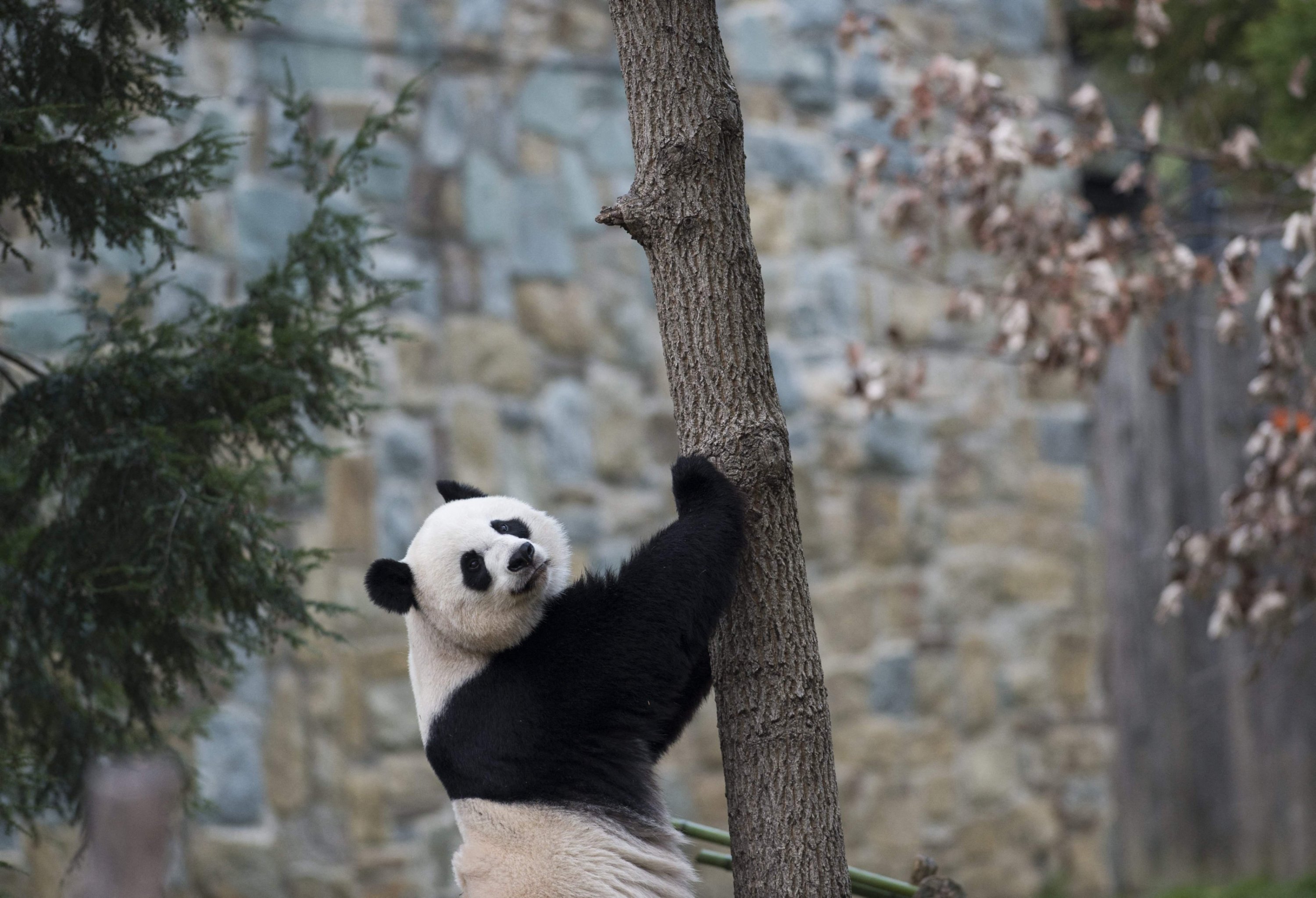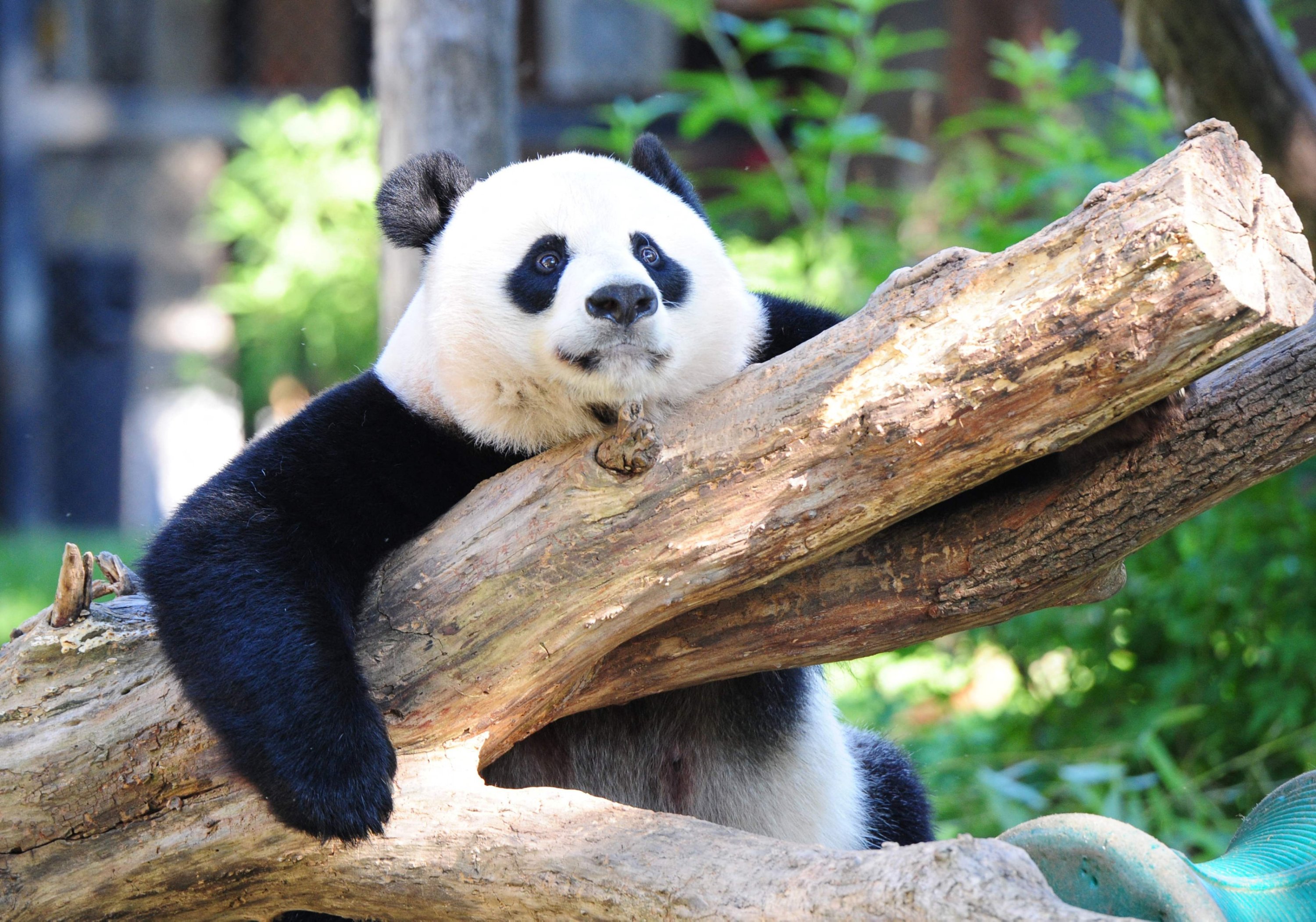© Turkuvaz Haberleşme ve Yayıncılık 2024
Regardless of the distance or weather conditions, Jane Christensen resolved to visit the giant pandas in Washington before they departed.
Now in her 60s, Christensen told Agence France-Presse (AFP) that she had been captured by the species' magical cuteness over a half-century ago when China first gifted two pandas to the United States.
"I've had 'panda-monium' ever since," she said under a chilly rain outside the Smithsonian National Zoo's panda exhibit – hundreds of miles from her home in Michigan.
All three of the zoo's pandas are leaving for China by the end of the year, bringing at least a temporary end to a decadesold connection between the cuddly animal and the U.S. capital.
The zoo has kicked off a weeklong "Panda Palooza" event ahead of the departure, welcoming thousands of fans, many outfitted in panda-themed hats and shirts.
And while the pandas' departure had been expected due to contractual obligations, many can't help but see the shift as reflective of the growing strains between Beijing and Washington.
The first black-and-white furballs arrived from China in 1972 as a gift following then-president Richard Nixon's historic visit to the Communist-led nation.
Recognizing the species' uncanny ability to attract fans – and a potential source of income for its conservation program – China continued to loan out pandas to Washington and other zoos around the world, since dubbed "Panda Diplomacy."
At the Smithsonian Zoo, millions of dollars have been spent on the pandas' enclosure and studies, especially related to breeding, including a popular 24-hour "Panda Cam" to monitor their behavior and health.
Zoo Atlanta, in the southern U.S. state of Georgia, will send its four pandas to China by late 2024.

Pandas Mei Xiang and Tian Tian arrived in Washington in 2000 and have since had four surviving cubs. Xiao Qi Ji ("Little Miracle" in English) was born in 2020 and will depart by December.
During Xi Jinping's state visit in 2015, the last by a Chinese leader to the U.S., his wife and the U.S. first lady held an official ceremony to unveil the name of panda cub Bei Bei.
Eight years later, with mounting tensions over Taiwan and continuing trade disputes between the two powers, the panda exhibit is about to be closed.
The Chinese government tends to "bestow" pandas on "nations with whom China's relations are on the upswing, as a form of soft power projection," said Kurt Tong, a former high-ranking U.S. diplomat and managing partner of the Asia Group consultancy.
"In that respect, given the current tenor of U.S.-China relations, it is not surprising that Chinese authorities are allowing panda contracts with U.S. zoos to expire," Tong said in an email to AFP.
He noted that the loans also help China "augment the panda conservation budget."
The Smithsonian pays $500,000 annually to its Chinese conservation group partner, the zoo said.

The pandas' departure "closes a major chapter of an international animal care and conservation success story," the zoo said in a statement, adding that it "remains committed to continuing its efforts to secure and safeguard a healthy future for giant pandas."
One attendee saying her goodbyes at the zoo highlighted successful efforts to grow the wild population of pandas.
"We've come a long way in getting the numbers back up," said Michaela from Maryland, who had her face painted like a panda. The species remains listed as vulnerable.
As the rain let up, a steady stream of visitors began filling the area around the panda's outdoor enclosure.
Known for being sluggish, the panda made repeated laps around the acre-sized plot, climbing up and down the hills – ensuring everyone got one good, final snapshot.
